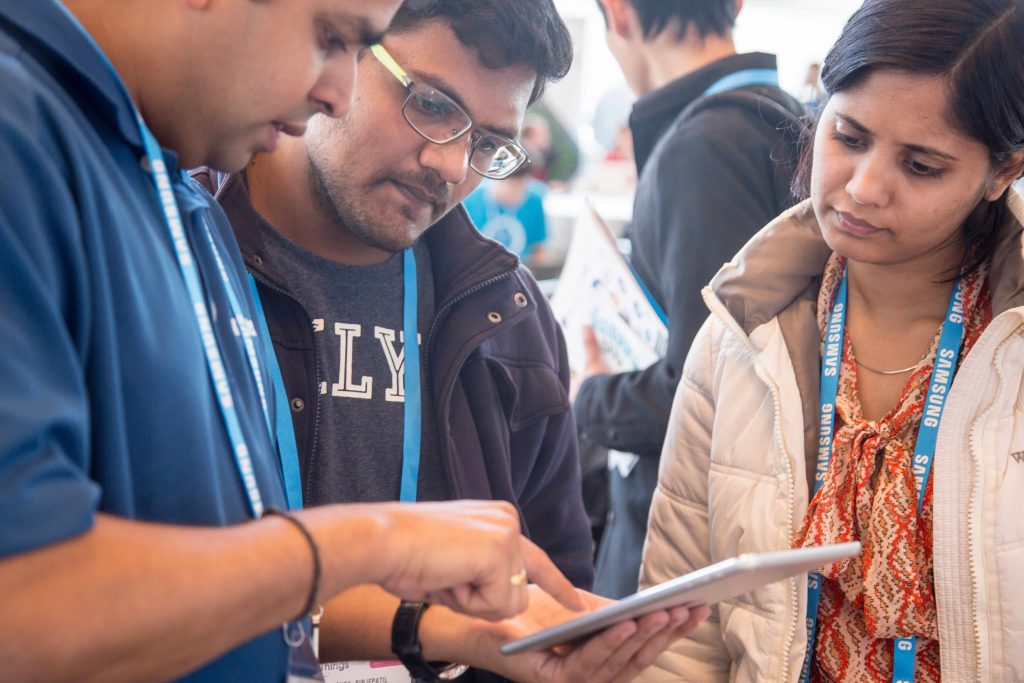
Proximity-based marketing is having a (mobile) moment. Big brands that are eager to trace advertising and their mobile app investments back to in-store sales are looking at ways to emulate Starbuck’s admirable success with their Rewards program.
To really understand the value of proximity-based marketing let’s step back and think about the value that is created when the right message is delivered at the right time and in the right place to the right person.
Imagine you buy a hazelnut latte at Starbucks nearly every day. You’re in New York on a business trip, land in the middle of the night exhausted. Upon waking all you want is a hazelnut latte. Gone are the days of searching for the nearest Starbucks online. With today’s Starbucks app you can find the nearest store and pre-order your drink as you walk there. However, with enhanced proximity marketing you could receive a personalized alert from Starbucks in the morning telling you where the nearest store is even before you search. Once you are in the store you could also receive a message, triggered by a beacon, with an offer for 20% off a food item.
Proximity Technology Explained
Today’s mobile technologies greatly expand the ways in which marketers can reach their customers. Proximity-based marketing has three big advantages:.
- Understanding and segmenting your customers based on where they spend their time.
- Engaging customers based on location & time context.
- Bridged attribution to prove your marketing dollars in the physical side are positively affecting the digital side, and vice versa.
What Does Proximity-Based Marketing Mean for Mobile Marketers?
By combining proximity technology with mobile apps, mobile marketers can easily, and seamlessly, connect the digital world with reality. Marketers can detect if a customer with their app is near their store or facility. Those customers can then be sent offers tailored to their specific location and context.
However, the use cases aren’t limited to marketers with retail locations. Customers who visit brick and mortar stores can make very profitable usage of proximity technologies. For example, delivery or transportation apps can use proximity to know where customers are and then pre-position resources. A ride-sharing app, for example, might detect that a large number of their customers are at a soccer game, and then move their drivers to that location as the game ends. A couponing company may see that their users are visiting a certain store. They could use that information to offer store-specific coupons or strategically place end-caps in the store.
Types of Proximity Technologies
Essentially a collection of different sensor technologies, proximity enables awareness of both place and time for mobile apps:
- Geofences —Software-based virtual perimeters. They are designed primarily for large scale proximity detection (~100m or larger) and have zero cost for deployment.
- Beacons — Inexpensive, micro-devices that simply broadcast a unique ID. When a mobile device gets within range they can trigger a response in an app. They’re great for indoor or close proximities less than one meter, such as a point of sale display.
- Wi-Fi — In addition to being used for internet access, Wi-Fi can also be used as a medium range proximity detector (~90 meters). Mobile devices only need to “hear” a Wi-Fi network without actually joining to trigger proximity actions. Available only on Android devices.
- QR — Established 2D barcodes that trigger a custom response from a mobile device when scanned. QR codes are supported across platforms, cheap to deploy and can be used from a number of distances based on print size ranging from business cards to sides of buildings.
- Near Field Communication (NFC) — Sticker-like tags that can be placed on physical objects, that when tapped by an Android device can trigger a specific action, such as deep linking into an app or opening a browser.
Attribution Ties It Together
TUNE’s attribution technology is the market leader in enabling marketers to understand the true value of their marketing activities. Clients use TUNE technology to trace in-app activity back to the ad network and campaign that produce the app install and open.
The collaboration between TUNE and Smartwhere takes this to the next level. Marketers now understand which ad networks are delivering users who are using the app for in-store purchases. By combining their technology they can now answer key questions for marketers such as:
- Is my digital marketing impacting my physical strategy?
- Is my physical marketing impacting my digital strategy?
- Am I driving installs of my apps from POS advertising within my locations?
- Is out-of-home media having an impact on installs and engagement?
How Smartwhere Proximity Works With TUNE
- Latest version of Android or iOS SDK
- App requesting location permissions
- Customer selects the location points of interests within the Smartwhere admin
- Flow
- TUNE SDK sends lat and long to Tune / TMC during standard Tune events
- TUNE passes that information to Smartwhere
- Smartwhere determines if the event occurred within one of the pre-defined point of interest data sets.
- The result is sent back to TUNE/TUNE Marketing Console
- Reporting is available in both TUNE/TUNE Marketing Console and Smartwhere admin interface.
Next Steps
To learn more about how the collaboration between TUNE and Smartwhere can begin unifying your mobile marketing with your physical stores and real world customers, contact your Account Manager. We can supply more information on how Smartwhere’s technology implements with TUNE.
Author
Becky is the Senior Content Marketing Manager at TUNE. Before TUNE, she handled content strategy and marketing communications at several tech startups in the Bay Area. Becky received her bachelor's degree in English from Wake Forest University. After a decade in San Francisco and Seattle, she has returned home to Charleston, SC, where you can find her strolling through Hampton Park with her pup and enjoying the simple things in life.




Leave a Reply
You must be logged in to post a comment.